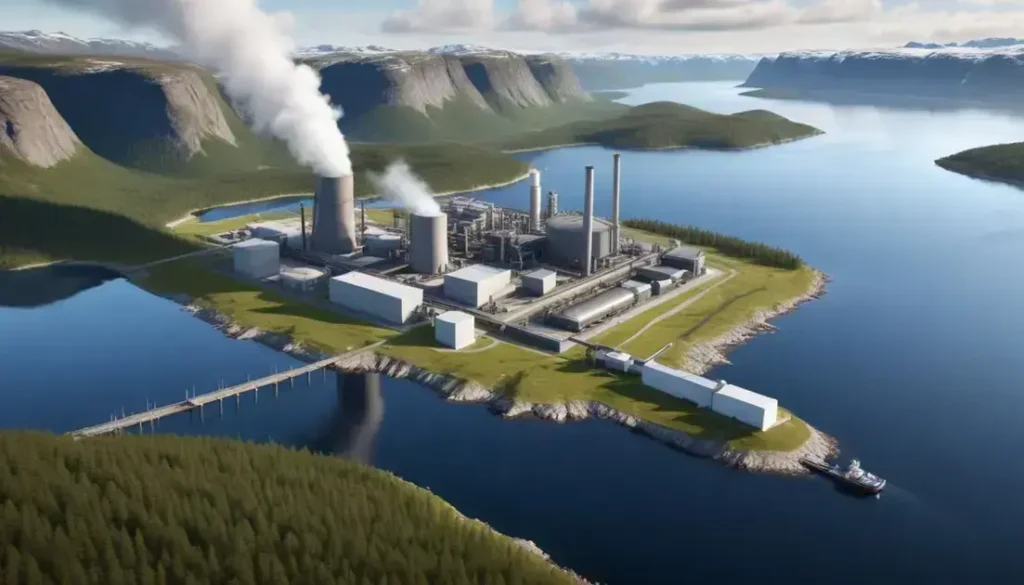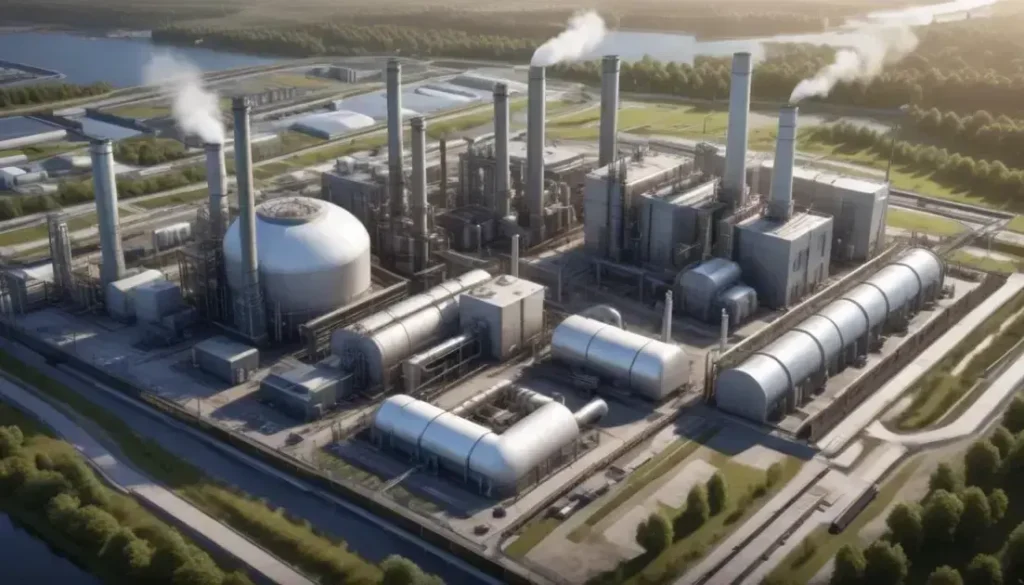Carbon capture technology effectively reduces industrial greenhouse gas emissions by capturing CO2 before it enters the atmosphere, thus playing a crucial role in mitigating climate change and promoting sustainable practices.
Carbon capture is making waves in the fight against climate change, with Norway leading the way. Curious about how this technology can reshape our industrial future?
An overview of Norway’s Longship project
The Longship project in Norway represents a significant stride toward reducing industrial carbon emissions. This initiative aims to develop a comprehensive carbon capture and storage (CCS) framework, which captures CO2 from industrial sources before it enters the atmosphere. By 2024, the goal is to capture up to 400,000 tons of CO2 annually, drastically cutting down the carbon footprint.
Central to this initiative is the partnership between government and industry, helping to finance and enable the project. The Longship initiative is set to incorporate technological advancements that allow for real-time monitoring and efficient storage of captured CO2, ensuring environmental safety.
Another vital aspect is the creation of infrastructure necessary for transporting captured carbon to storage sites. Understanding the logistics around transportation is crucial since it involves building pipelines and utilizing existing shipping routes effectively. Norway’s geographical advantages play a significant role here, providing ideal conditions for long-term carbon storage in depleted oil and gas reservoirs.
Moreover, the implications of Longship extend beyond national borders, offering a model for global CCS solutions. This project is seen as a beacon for countries aiming to meet their climate goals, showcasing Norway’s commitment to pioneering sustainable practices.
Economic and environmental implications of carbon capture technology
The economic implications of carbon capture technology are multifaceted, influencing various sectors and job markets. As industries adopt this technology, they can not only reduce their carbon footprint but also comply with increasingly stringent environmental regulations. This adaptation can lead to lower long-term costs associated with carbon emissions and potential penalties imposed by governments.
Moreover, investments in carbon capture create opportunities for innovation and economic growth. New markets for captured CO2 are emerging, especially in sectors like enhanced oil recovery and agricultural products. These developments can stimulate job creation in engineering, manufacturing, and environmental consultancy.
From an environmental perspective, the advantages of carbon capture are substantial. By capturing CO2 emissions before they reach the atmosphere, we can significantly mitigate climate change impacts. This technology plays a critical role in achieving net-zero targets and sustainable practices across industries.
The effectiveness of carbon capture is further enhanced through advances in technology that improve capture efficiency and reduce costs. Innovations in materials and processes are making these solutions more viable for widespread implementation, driving the global shift toward a low-carbon economy. As the technology matures, its integration into existing infrastructure will become less complex, facilitating broader adoption.
In conclusion, the future of carbon capture technology
Carbon capture technology presents a promising way to tackle climate change while also offering economic benefits. By capturing carbon dioxide emissions from industrial processes, we can minimize environmental impact and comply with regulations.
The Longship project in Norway is a pivotal example of how governments and industries can work together to implement these solutions effectively. As technology advances, the cost of carbon capture will decrease, making it more accessible for various sectors.
Ultimately, adopting carbon capture not only helps in the fight against climate change but also opens new doors for economic growth and job creation. Embracing this technology is not just a trend; it’s a crucial step toward a sustainable future.
Frequently Asked Questions
What is carbon capture technology?
Carbon capture technology refers to processes that capture carbon dioxide emissions from sources like power plants and industrial processes to prevent them from entering the atmosphere.
How does the Longship project work?
The Longship project captures CO2 emissions and stores them safely underground, aiming to significantly reduce Norway’s carbon footprint by capturing 400,000 tons of CO2 annually.
What are the economic benefits of carbon capture?
Carbon capture can lower costs associated with carbon emissions penalties, drive innovation, and create jobs, especially in engineering and environmental sectors.
What are the environmental advantages of carbon capture?
The primary advantage is reducing greenhouse gas emissions, which helps mitigate climate change effects and supports global net-zero goals.
How can businesses implement carbon capture technologies?
Businesses can begin by assessing their emission sources, partnering with technology providers, and starting small-scale pilot projects to evaluate effectiveness.
Is carbon capture technology widely adopted?
While it is gaining traction, widespread adoption is still in progress. Ongoing research and government support are essential for its growth.


